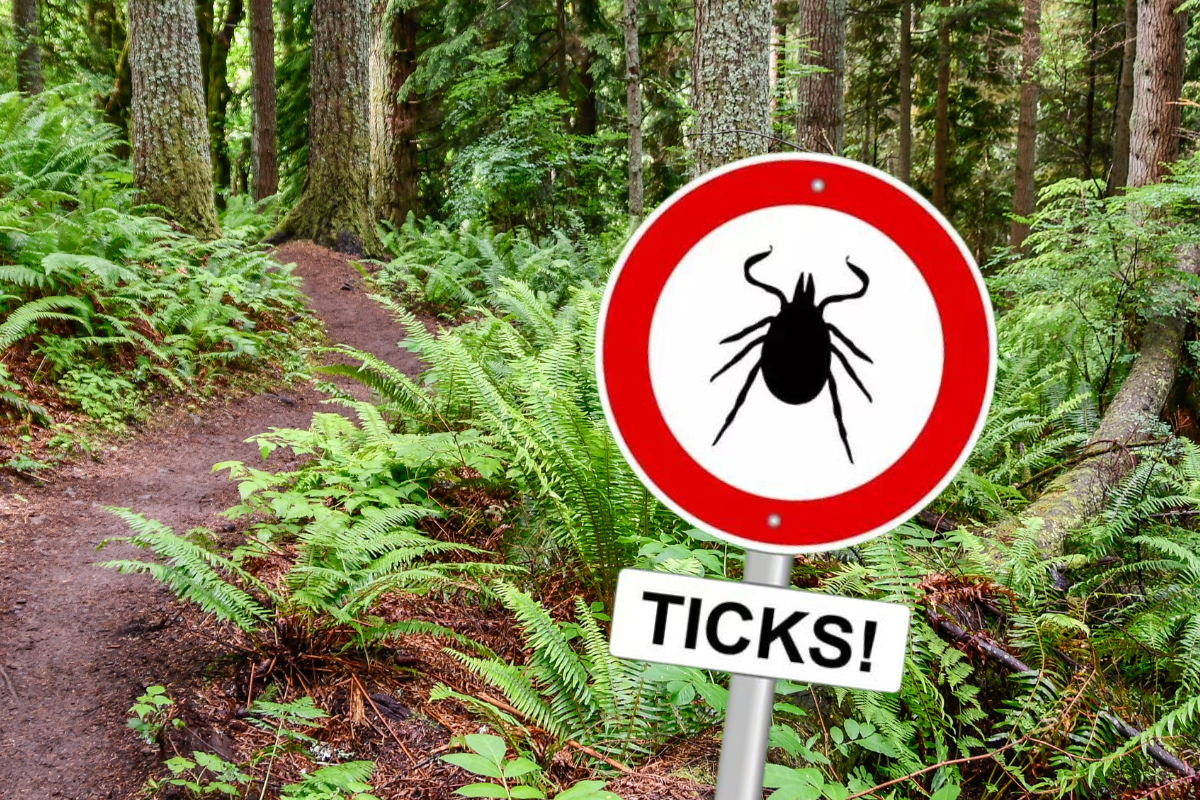By Scott Smith
It’s tick season, and with it comes the risk of contracting Lyme disease or another of the serious maladies that can result from being bitten by an infected tick.
The good news is that there are simple, proven natural precautions that can help keep you, your children, and your pets safe. We’ll get to that advice in a moment. But first, let’s talk about what not to do, for there are some common chemical treatments that often turn out to be ineffective and can be hugely damaging to the health of humans and pets, as well as to all manner of wildlife.
Lyme disease is caused by the bacteria Borrelia Burgdorferi. It is spread by a number of different ticks, but the deer tick is the most common carrier. Ticks pick the disease up from the blood of mice and then can pass on the bacteria to humans or pets. Other increasingly common tick-borne diseases include Babesiosis, Ehrlichiosis, and Rocky Mountain Spotted Fever.
Because symptoms of many of these diseases can vary widely, we suggest visiting the Centers for Disease Control and Prevention’s website about ticks to identify types of ticks, diseases they carry, and where they’re found. The CDC also offers step-by-step instructions that walk you through removing a tick and seeking care.
Although public health authorities recommend use of various acaricides (tick-control poison) to control tick populations in yards, the effectiveness of these treatments to prevent tick bites or human tick-borne diseases is questionable, based on findings from extensive studies supported by the CDC.
Tick-control boxes, for example, are dosed with insecticides such as fipronil, which is toxic to birds, fish and bees. The boxes attract mice, which then spread the poison around the environment. Worse are broad spectrum insecticide sprays, which can kill butterflies, other pollinators and insects while being ineffective against ticks, as they spend most of their lives in sheltered areas, like mouse burrows rather than on vegetation, where the insecticides hit.
A number of popular flea and tick repellents also rely on fipronil, which the Environmental Protection Agency says can cause nervous system and thyroid toxicity, kidney damage and convulsions in humans. Fluralaner, a systemic insecticide used in the flea and tick pill Bravecto, has side effects including vomiting and diarrhea as well as seizures and skin irritation. Pyrethrins and pyrethroids are also common ingredients in pharmaceutical flea and tick products and can cause a range of nasty side effects, including headaches and nausea.
Another common insecticide in flea and tick products is imidacloprid, a neonicotinoid. How deadly is this “neonic”? Consider this: Though imidacloprid has been banned for use on farms in England for years because of its harmful effects on the food chain, a recent large-scale study found that Imidacloprid was present in 66% of the samples taken from 20 rivers tested and was above toxicity limits in seven of the 20 rivers. There are about 10 million dogs and 11 million cats in the UK, with an estimated 80% receiving flea treatments.
The researchers found the highest levels of the pesticides downstream from water treatment plants, showing that urban areas were the main source and not farmland. The washing of pets was already known to flush imidacloprid into sewers and then rivers, while dogs swimming in rivers provides another pathway for contamination, reports The Guardian.
“The problem is these chemicals are so potent,” Dave Goulson a professor at the University of Sussex, told The Guardian. “We would expect them to be having significant impacts on insect life in rivers.” One flea treatment of a medium-sized dog with imidacloprid contains enough pesticide to kill 60 million bees, Goulson added.
Natural treatments for yourself and pets
Safe tick and flea treatments for your pets include natural products that contain Geraniol, a biodegradable ingredient that’s safe for the environment and can be found in local pet supply stores. Priscilla Feral, president of Friends of Animals, suggests looking for the following natural products: Alzoo flea and tick repellents; Nantucket Spider repellent spray for dogs; and Oscar’s Critter repellent spray.
Regularly check your pet for ticks using a flea/tick comb or by rubbing a masking-tape lint roller over the bodies and heads of cats or dogs. Also keep an eye on areas where your pet sleeps.
The safest way to reduce the tick population around your home is by discouraging mice, a tick’s main vector for disease. Seal off access points and food sources and place trash in tightly lidded containers. Remove piles of leaves or other debris that provide shelter for mice. Store wood piles by elevating them and keeping them away from your home.
To keep yourself tick-free while out hiking, apply a natural tick repellent made from essential oils such as lemongrass or cedarwood. Wear a hat and long, light colored clothing (It is easiest to spot ticks on light clothing), and tuck your pants into your socks so ticks can’t crawl up your legs. The advocacy group Beyond Pesticides further recommends using unscented shampoo and deodorant as well as Packers Pine Tar Soap, which seems to keep ticks from biting once they find you.
Stick to the trail during tick season as bushwhacking through the woods or tall grass is a surefire way to pick up a hitchhiking tick or two. Keep your dog on a leash to keep it out of known tick-infested areas.
Most important, check yourself and your pets thoroughly for ticks each day. Solicit help or use a mirror for hard-to-see areas. Pay special attention to the back of the neck, behind the ears and knees, between toes, and the groin. Also check anything you were carrying, such as a backpack or blanket that was put on the ground. Promptly shower to wash off any ticks that have not yet become embedded and place your clothes in the washer to kill any unnoticed ticks.

